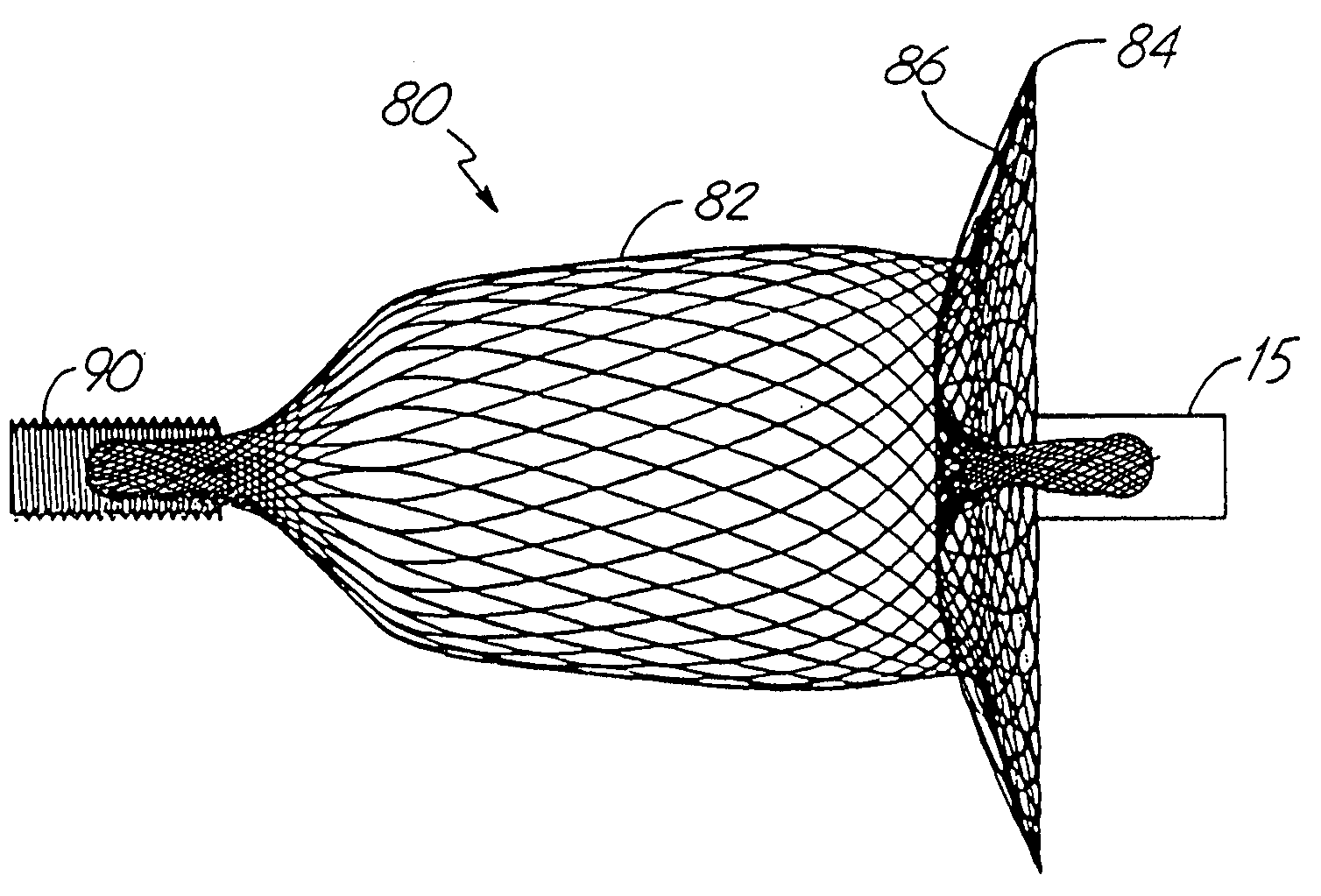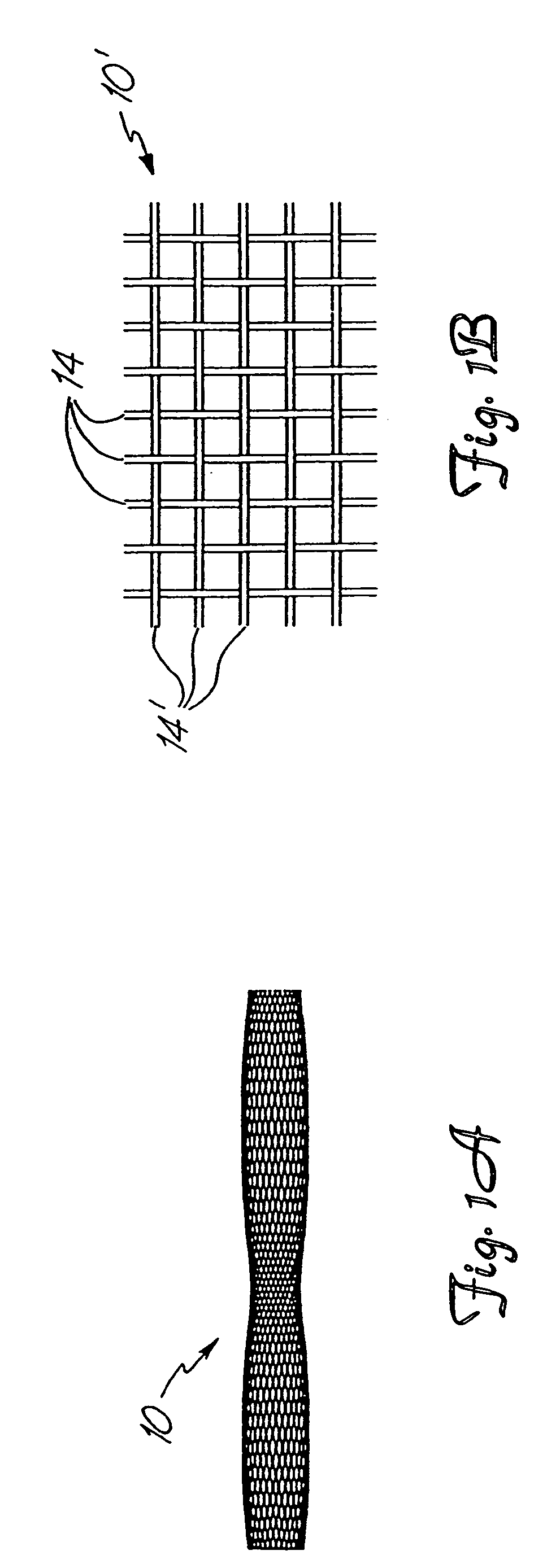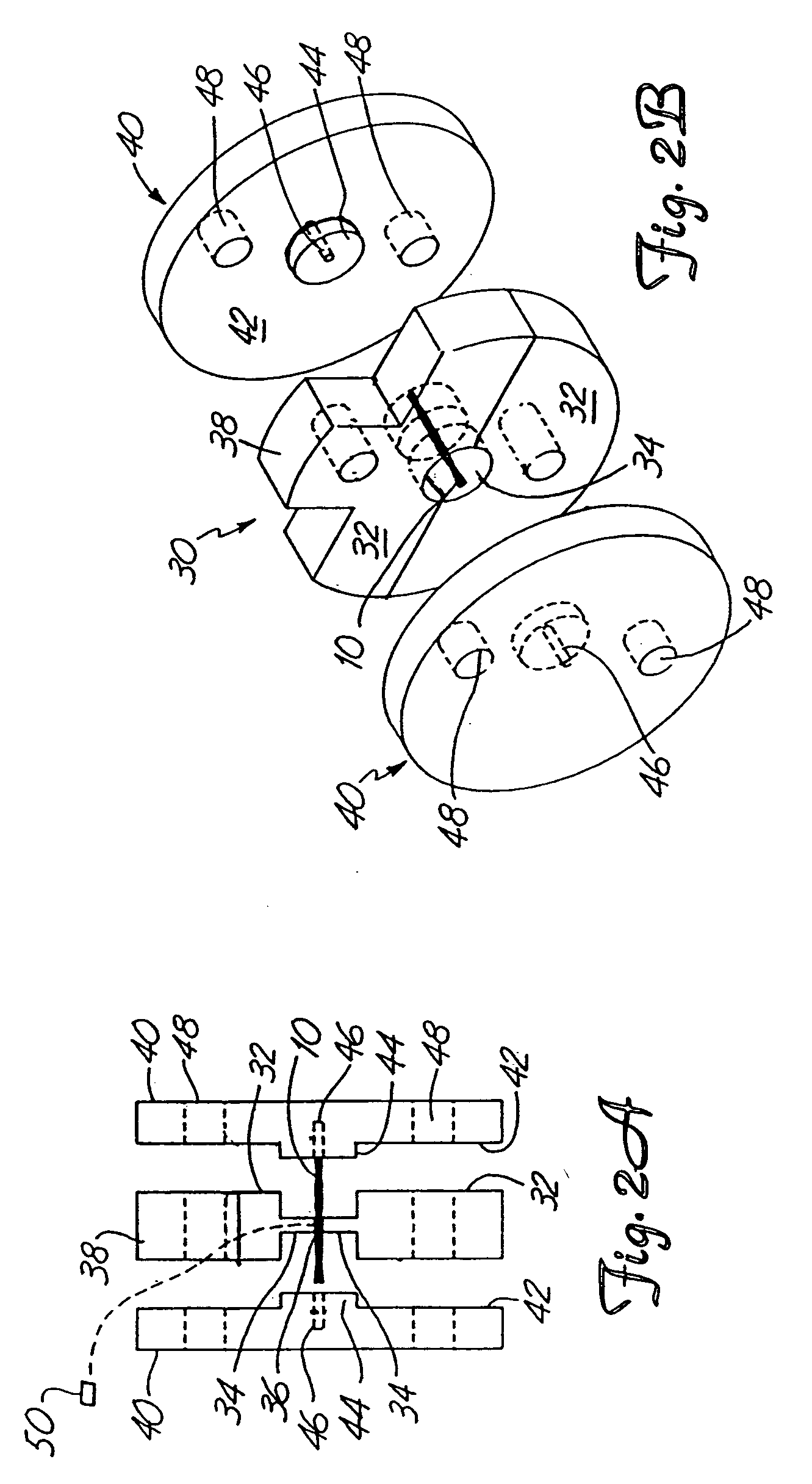Method and device for filtering body fluid
a filtering body fluid and filter technology, applied in blood vessels, prostheses, veterinary instruments, etc., can solve the problems of inability to achieve exceptional effectiveness in actual use, limited procedure, and prone to certain safety problems in embolizations
- Summary
- Abstract
- Description
- Claims
- Application Information
AI Technical Summary
Benefits of technology
Problems solved by technology
Method used
Image
Examples
Embodiment Construction
[0035] The present invention provides a reproducible, relatively inexpensive method of forming devices for use in channels in patients' bodies, such as vascular channels, urinary tracts, biliary ducts and the like, as well as devices which may be made via that method. In forming a medical device via the method of the invention, a metal fabric 10 is provided. The fabric is formed of a plurality of wire strands having a predetermined relative orientation between the strands. FIGS. 1A and 1B illustrate two examples of metal fabrics which are suitable for use in the method of the invention.
[0036] In the fabric of FIG. 1A, the metal strands define two sets of essentially parallel generally helical strands, with the strands of one set having a “hand”, i.e. a direction of rotation, opposite that of the other set. This defines a generally tubular fabric, known in the fabric industry as a tubular braid. Such tubular braids are well known in the fabric arts and find some applications in the ...
PUM
 Login to View More
Login to View More Abstract
Description
Claims
Application Information
 Login to View More
Login to View More - R&D
- Intellectual Property
- Life Sciences
- Materials
- Tech Scout
- Unparalleled Data Quality
- Higher Quality Content
- 60% Fewer Hallucinations
Browse by: Latest US Patents, China's latest patents, Technical Efficacy Thesaurus, Application Domain, Technology Topic, Popular Technical Reports.
© 2025 PatSnap. All rights reserved.Legal|Privacy policy|Modern Slavery Act Transparency Statement|Sitemap|About US| Contact US: help@patsnap.com



